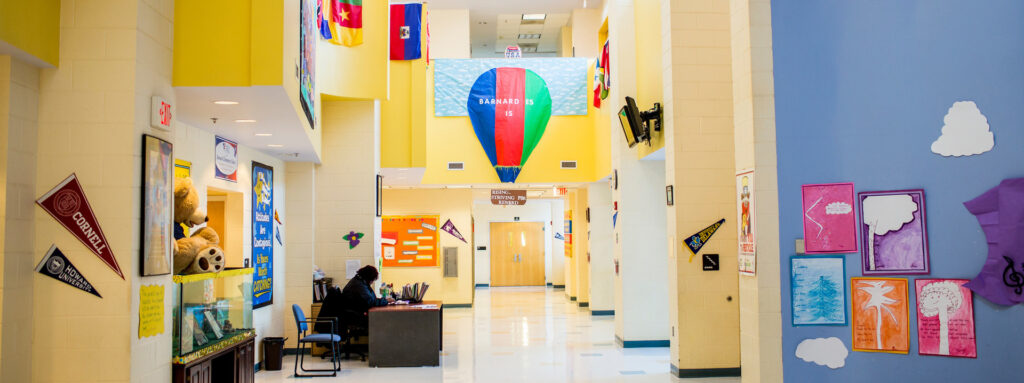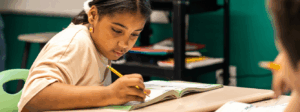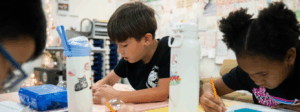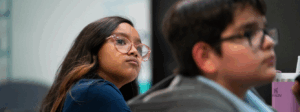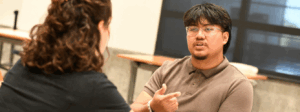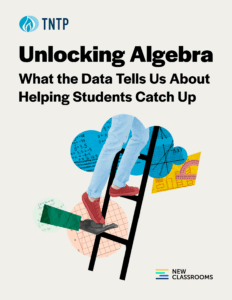This is the first in a series of posts about Literacy with Voice and Choice. Read Part 2 and Part 3.
There’s a quiet revolution happening in literacy instruction—one that began before the pandemic but could be part of how we help students thrive in its wake.
It’s an approach focused on both high-quality instructional materials and the “science of reading” that emphasizes phonics in the early grades. The latter is a change that has delivered impressive results, enabling elementary-aged kids to develop the foundational skills they need to become successful readers. Upper grade teachers can then focus on comprehension, a skillset students hone with harder and harder books as they get older. All of this dovetails with the design of high-quality reading materials that organize grade-level texts around topics that expand students’ knowledge and vocabulary—the real keys to building strong comprehension.
But even high-quality materials plus instruction grounded in the science of reading is not enough. We learned in our 2018 study, The Opportunity Myth, that students need strong materials because they provide daily access to grade-level content and assignments. And we learned that students need instruction that deeply engages them. That means great literacy instruction needs to lift up students’ own voices by giving them agency and choice in their learning experiences.
TNTP embarked on a partnership to do precisely that with two schools in the Bronx: Concourse Village Elementary School, a New York City Department of Education school, and Mott Haven Academy, a charter school with a mission of serving children in New York City’s child welfare system. We call their new approach Literacy with Voice and Choice. And along the way, we all learned quite a bit:
- Systematic instruction in phonics in the early grades, paired with a “content-rich” high-quality literacy curriculum, is a critical starting point. That’s because, in the words of social scientist Daniel Willingham, “every passage that you read omits information. All of this omitted information must be brought to the text by the reader. Otherwise the passage will be puzzling, or only partly understood.” It’s essential that students cumulatively build their background knowledge and vocabulary by reading strategically sequenced texts organized around topical units of study—since, to Willingham’s point, knowledge is actually the key driver of reading comprehension in all subjects, not just ELA.
- Technology can be a game-changing tool for amplifying students’ voices and providing them with choice to personalize their learning. Since every student brings unique knowledge to the classroom based on their lived experience, tech can help bring students to a similar level of background knowledge on any given topic in the curriculum. For example, a 5th grader reading Bud Not Buddy in a unit about life during the Great Depression could read curated additional texts about that era on a device at home via a digital library. With the topic-specific knowledge and vocabulary those texts build, the student would be better positioned to comprehend a grade-level book like Bud Not Buddy and share their point of view in a class discussion. Tech can also give students options for showing what they’ve learned: they can pick a format that speaks to their strengths and interests, like producing a video instead of taking a multiple choice exit ticket.
- Student engagement goes up when kids have a real say in what they’re learning, whether that is setting and monitoring their learning goals, deciding the order of their activities, picking how they show what they learned, choosing if they work alone or in a group, or some combination of these choices.
Literacy with Voice and Choice doesn’t just mean adding in tech, or stamping literacy instruction with a buzzy term. And it is most certainly not about replacing literacy practices we know work for students. It’s about taking content-rich, knowledge-building materials, pairing them with instructional best practices, and augmenting both by meeting students where they are and putting them in charge of their learning.
You’ll hear the same sentiment from Sebastian Salcedo, a student at Concourse Village Elementary School in the Bronx. “I’ve learned the true meaning of reading is to learn and have fun,” he said, after describing a literacy curriculum with content on everything from plants and animals in pre-Kindergarten to the Lenape and Iroquois—who inhabited New York prior to European colonization—in 4th grade, toggling between independent and group activities, and learning from apps like Newsela and Flocabulary that build knowledge and vocabulary. “Reading makes me curious—and when I get curious, I get excited, so I keep reading.”
Our goals for our partnership with these two schools were threefold. First, design a literacy program that paired a content-rich curriculum with technology to personalize instruction. Second, demonstrate that this approach has clear benefits to student learning—not just in English Language Arts, but across all subject areas. And finally, to share what we learned from working alongside the incredible teams at both schools with the field.
While traditional achievement measures like state test scores aren’t available due to the pandemic, both schools saw better attendance and teachers reported higher student engagement than schools with similar demographics. Leaders at both sites also credited the work we did together with helping to position their staff and students to pivot more quickly and successfully when school buildings closed.
Our hope is that more schools will be excited about what’s possible for student learning when kids experience literacy with voice and choice, which we believe can give kids a better experience than traditional approaches. Next week, we’ll share more about how our partnerships rolled out in each school, along with the story of how one student’s outlook on himself as a reader and engagement as a learner was changed dramatically by this new approach to literacy instruction.
